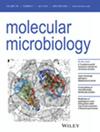Impairment of Lipoylation Mediated by Bromooctanoate Targets Eukaryotic Amidotransferases.
IF 2.6
2区 生物学
Q3 BIOCHEMISTRY & MOLECULAR BIOLOGY
引用次数: 0
Abstract
Lipoylation is a post-translational modification in which lipoic acid is attached to specific apoproteins of enzyme complexes, like E2 subunits of dehydrogenases or GcvH of the glycine cleavage system. A defining feature of organisms with a lipoyl-relay system is the presence of amidotransferase activity, which enables the transfer of lipoyl groups attached to intermediary proteins to the E2 subunits. In this study, we characterized the lipoate metabolism of Capsaspora owczarzaki and Plasmodium falciparum. Both organisms utilize amidotransferases in their lipoylation pathways, with the filasterian enzyme playing a key role in lipoate synthesis, while the apicomplexan counterpart, previously considered a lipoyltransferase, is essential in its lipoate salvage pathway. We also discovered that specific structural features and certain conserved domains in eukaryotic amidotransferases can significantly influence their mechanism of action and susceptibility to the lipoate analog bromooctanoate. Overall, this study highlights the metabolic strategies of C. owczarzaki and emphasizes the critical role of amidotransferases as ancestral enzymes in the evolution of lipoate metabolism, suggesting that the lipoyl relay may represent a universal pathway across diverse clades.溴辛酸盐介导的脂酰化损伤靶向真核氨基转移酶。
脂酰化是一种翻译后修饰,其中硫辛酸附着在酶复合物的特定载脂蛋白上,如脱氢酶的E2亚基或甘氨酸切割系统的GcvH。具有脂酰接力系统的生物体的一个决定性特征是存在氨基转移酶活性,这使得连接到中间蛋白的脂酰基团转移到E2亚基上。在本研究中,我们对奥恰扎恰氏辣椒和恶性疟原虫的脂酸代谢进行了表征。这两种生物都在它们的脂酰化途径中利用氨基转移酶,丝状体酶在脂酸合成中起关键作用,而顶复合体酶,以前被认为是一种脂酰转移酶,在脂酸回收途径中是必不可少的。我们还发现真核酰胺转移酶的特定结构特征和某些保守结构域可以显著影响它们的作用机制和对脂酸类似物溴辛酸盐的敏感性。总的来说,本研究强调了C. owczarzaki的代谢策略,并强调了氨基转移酶作为祖先酶在脂酰代谢进化中的关键作用,表明脂酰传递可能代表了不同进化支的普遍途径。
本文章由计算机程序翻译,如有差异,请以英文原文为准。
求助全文
约1分钟内获得全文
求助全文
来源期刊

Molecular Microbiology
生物-生化与分子生物学
CiteScore
7.20
自引率
5.60%
发文量
132
审稿时长
1.7 months
期刊介绍:
Molecular Microbiology, the leading primary journal in the microbial sciences, publishes molecular studies of Bacteria, Archaea, eukaryotic microorganisms, and their viruses.
Research papers should lead to a deeper understanding of the molecular principles underlying basic physiological processes or mechanisms. Appropriate topics include gene expression and regulation, pathogenicity and virulence, physiology and metabolism, synthesis of macromolecules (proteins, nucleic acids, lipids, polysaccharides, etc), cell biology and subcellular organization, membrane biogenesis and function, traffic and transport, cell-cell communication and signalling pathways, evolution and gene transfer. Articles focused on host responses (cellular or immunological) to pathogens or on microbial ecology should be directed to our sister journals Cellular Microbiology and Environmental Microbiology, respectively.
 求助内容:
求助内容: 应助结果提醒方式:
应助结果提醒方式:


